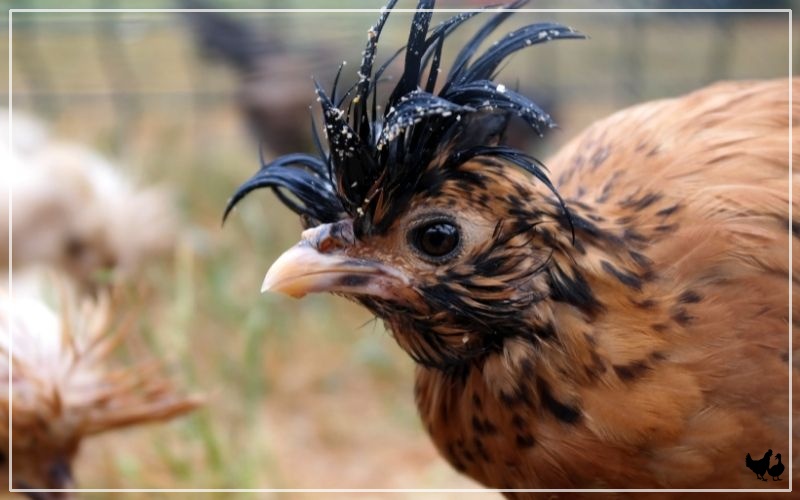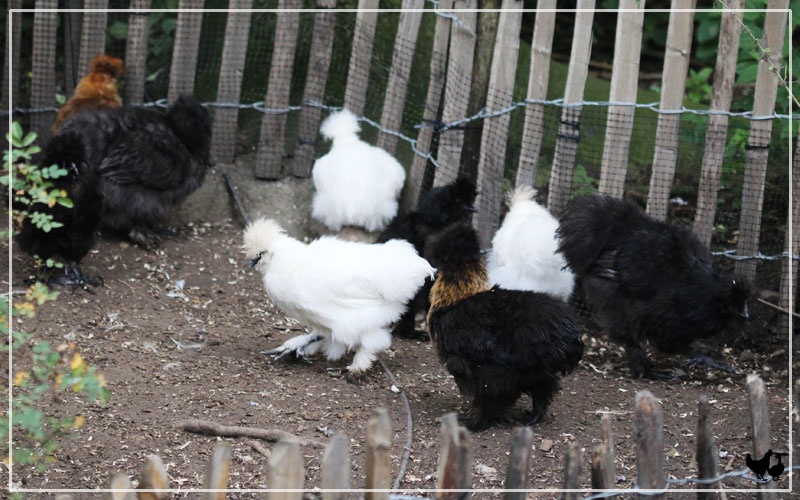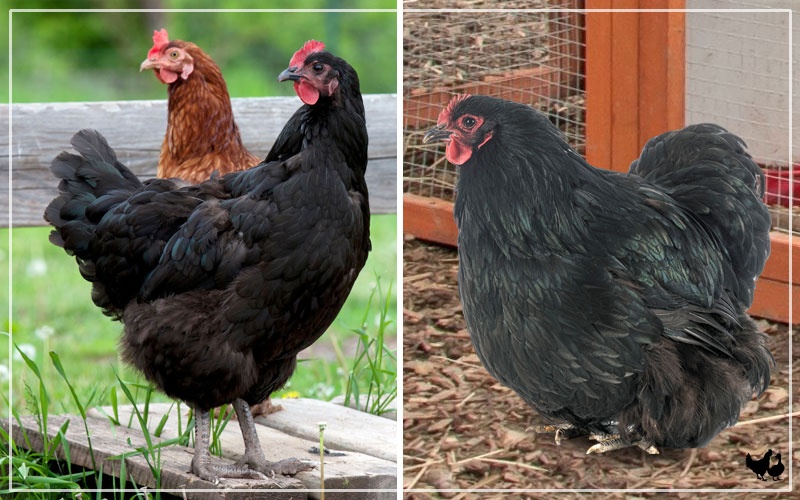Chicken Supplies 101: Raising Healthy Chickens
When starting their poultry-keeping venture, most people assume they do not need much because chickens are relatively easy to keep.
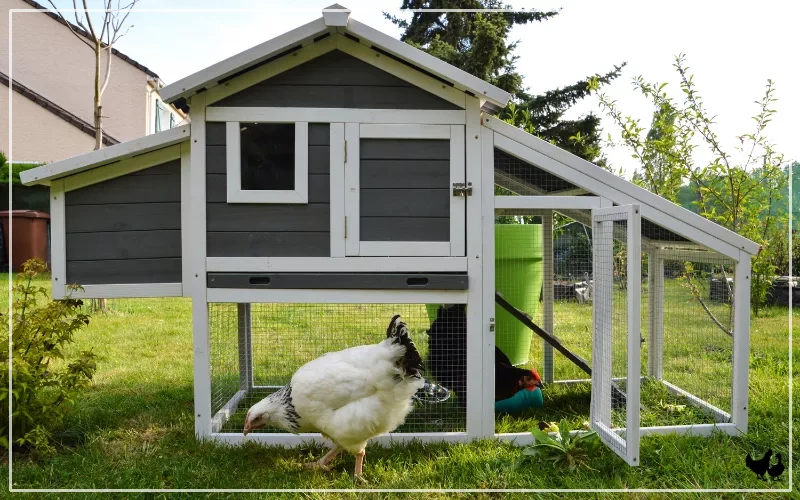
However, though easy to keep chickens, you will only harness many benefits from the birds with the right supplies. You need to stock up on several things before bringing in your feathered friends to guarantee the chickens are safe and in the best environment for them to thrive.
Before heading to the store, you should evaluate why you want to keep chickens. This answer will influence the breed of chicken you get and the right supplies to match the benefits you envision.
For instance, when you raise chickens for meat, these should be bred to grow quickly and big enough for your table. This might mean getting a lot of food.
Now that you know what chicken type you will be getting and why you want to keep chickens, read on to learn what you need for your birds.
Basic Supplies Needed
Below are the basic supplies you will need for poultry keeping.
Feeders and Waterers

Your chickens will die within a few days if they do not have enough food and water. The size of your flock and the available space in your coop will inform the feeder you buy.
A wall-hung feeder is the best choice for a small coop with about five birds. This keeps poop and shavings from contaminating the food and keeps your chickens from roosting on it.
If you have a large flock, you can have an outdoor feeder so that the birds do not drop food in the coop and make cleaning a challenge. An outdoor feeder should be vermin-proof and waterproof.
A metal feeder can suffice. If you have a few chickens, steer clear of a high-capacity feeder since food will be left in it and can get toxic and moldy, then make your birds sick. Six chickens or less can comfortably feed in a 10-pound feeder. For a hundred birds, you need about a 300-inch feeding trough.
In a small coop, a container waterer will suffice to keep your flock hydrated. For a hundred birds, you can get a waterer that is about 96 inches.
If you have many chickens, consider getting an automatic waterer. A plastic waterer costs about $4-$6, while a metallic one costs $14-$17. A chicken feeder retails for $5- $16, with an automatic feeder costing $150-$200.
Coop and Chicken Run

You need a chicken coop to keep your flock safe from predators and harsh weather. The birds should also have a safe space to free range instead of staying in their coop throughout. If you have a run outside, your birds need 2-3 square feet each in the coop.
The run should have 5-10 square feet for each chicken. You can expect to spend $50-$300 on the coop, depending on its features, while a metal run retails for $200-$300, depending on its size and materials. Alternatively, you can build your chicken coop and run to lower these expenses.
Bedding Materials
You need bedding on your chicken coop floor to maintain the enclosure’s cleanliness and your flock’s health. The leading bedding material alternatives for coops are pine shavings, grass clippings, hemp, wood chips, mulch, and straw. Thankfully, most of these materials can be repurposed from other places, so they will not cost much.
Nest Boxes & Roosts

Chickens love hanging out high, a practice that stems from years in the wild where the raised platform protects them from predators and the cold. Thus, you need a roost for them to hang on to, more so at night.
The roost should be about 18 inches high and about 12’’-15’’ apart vertically and not less than 12’’ apart horizontally. Your roosts can be made from simple branches and leftover wood. Alternatively, you can get a ready-made roost for $20-$30.
Your laying hens need a secluded and safe location for laying their eggs. Nesting boxes will encourage the birds to lay their eggs in a designated secure location and make it easy to collect the eggs. You can use a plastic tub, metal box, egg crate, or wooden crate as a nest box or get one for $40-$150.
Supplemental Lighting and Heat Sources
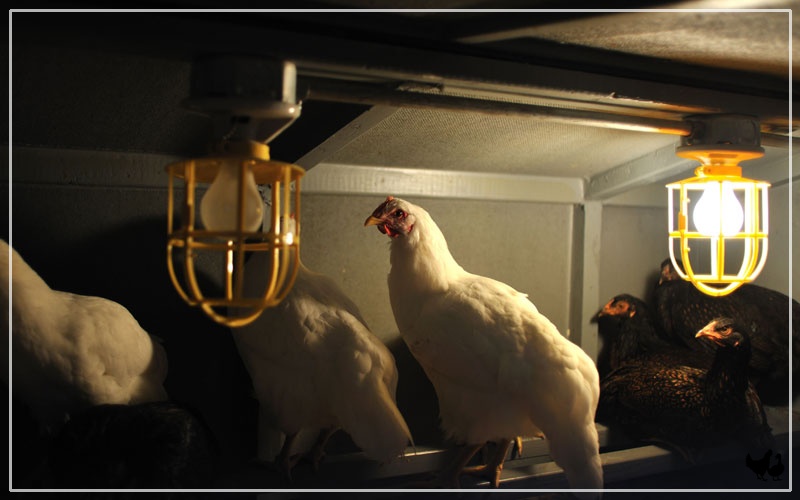
Chickens are hardy creatures, but they need supplemental heating to keep them comfortable in cold weather. 65-75 degrees Fahrenheit is the ambient temperature for most chicken coops.
You can use heat lamps, heating pads, flat panel heaters, infrared heaters, or space heaters for your coop. These cost $30-$100, but you should also take their ongoing energy costs into account.
Daylight will stimulate your chickens’ pituitary glands, which, in turn, stimulate their ovaries to produce eggs. Supplemental lighting thus increases egg production more so in the winter.
You can use a fluorescent or LED bulb sold at $5-$30 suspended approximately seven feet above the ground for lighting. A heat lamp can also light your chicken coop while heating it.
Ventilation Systems
Chicken coops should have enough ventilation to keep the birds comfortable and keep the air in the enclosures ammonia-free.
Windows and vents in the coop provide all-year ventilation, but you can supplement these with mechanical ventilation via fans and wind turbine ventilation on the coop’s roof. Depending on its size and features, the fan will cost $30-$140.
Miscellaneous Supplies and Accessories
There are other supplies you should consider before bringing your chickens home to ensure their comfort and safety. You, for instance, can get an automatic door opener for $90-$150.
This will keep your birds safely enclosed in the coop and open the door at a set time, so the chickens do not have to spend too much time indoors waiting for you to open the door.
Consider getting chicken toys as well to keep the birds occupied, especially when locked up during long winters. These cost $10-$30.
Nutrition for Chickens

You will need feed for your chicken to keep them productive and healthy. The ideal nutrition for chickens is grouped according to their life stages and purpose.
Here are the main chicken feeds you will need.
- Starter feed. This is a protein-dense feed that meets the dietary needs of chicks. Your chicks can comfortably survive on starter feed for the first six weeks.
- Grower feed. In many ways, this is designed for teenage chicks that are about 6-20 weeks. They have 16-18% protein to support the development of egg shells but contain less calcium than typical layer feeds.
- Layer feed. This has a balance of minerals, vitamins, protein, and calcium that encourages the production of healthy eggs. Though the protein content is 16-18%, like the grower feed, it has a higher calcium content to make eggshells crunchy, clean, and crisp. Layer feeds are only given to chickens at about 20 weeks when they start laying eggs.
- This is an unprocessed and loose version of chicken feed that is often fed to chicks because it is easy to digest. Nonetheless, you can also feed it to mature chickens when combined with hot water to get a porridge-like consistency.
- This is a coarse mash variety, but it is not as compact as pellets. Most poultry farmers use mash to bridge the gap between pellets and mash for their birds.
- These are compact cylinders of feed. They are very popular among backyard chicken keepers since they hold their shape even if chickens knock their feeders over.
- Shell grit. This is a rich calcium source that helps hens lay eggs with strong shells. Grit is also stored in your birds’ gizzards to help them pulverize their feeds and easily digest them.
Protein, Calcium, and Vitamin Requirements for Chickens
In chickens, proteins are meant for DNA replication, transportation of other molecules, enzyme production to support chemical reactions, and cell structure.
Chicks up to six weeks need 20% protein, while at 7-19 weeks, they should get 17-18% protein. Throughout their egg-laying cycle, your chickens need approximately 16% protein, whereas molting birds need up to 20%.
Chickens need vitamins A, D, E, K, B1, B2, and B12. You need about 7000-12000 IU/Kg of vitamin A, 200-3000mg/kg of vitamin D, 20-30 mg/kg of vitamin E, 1-2.5mg/kg of vitamin B1, 4-7mg/kg of vitamin B2, 0.015-0.025mg/kg of vitamin B12 and 2-3 mg/kg of vitamin K for your birds.
Calcium is vital for the production of strong, healthy eggs and bone formation. A laying hen will need 4-5g of calcium daily.
Safety Considerations When Raising Chickens
You need to keep your flock safe from predators and diseases to guarantee the birds benefit you and lower your care expenses. Here are tidbits on protecting chickens from predators and diseases.
Best Practices to Follow For Poultry Protection from Predators
Here are the steps for keeping your flock safe from predators:
- Bury chicken wire at least two feet deep around the chicken run so predators cannot dig it out and get into the run.
- Cover the chicken run with wire so that hawks cannot swoop down and attack the chickens.
- Cut tall grass and bushes around the chicken coop so that you can see predators.
- Block any gaps in the fence around the run.
- Lock in your flock in the coop at night.
- Collect eggs daily to deter snakes and rats.
- Use electric fencing around the chicken coop.
Vaccinations and Disease Prevention Strategies

You can vaccinate your chicks against different conditions to protect them. These include:
- Newcastle disease when the birds are 18 days and six weeks
- Dry pox at four weeks
- Marek’s disease when the chicks are a day old or before they hatch
- Avian pox at about four weeks
Some jurisdictions dictate what vaccines you should get for your chickens, and there might be routine vaccination drives for different diseases. Here are other steps you can take to protect your flock.
- Isolate new and sick birds
- Wash your hands before handling the birds and when handling their feeds
- Keep the chickens’ surroundings clean
- Use quality feeds
- Properly dispose of dead birds
Conclusion
With the information above, you know what to get for your chickens and how best to protect them from diseases and predators.
It might take time to harness the highest benefits of poultry keeping, even with the right supplies in place.
Be patient and liaise with experienced poultry farmers to guide you. You should also get a good vet to consult from time to time on how to handle different issues.
